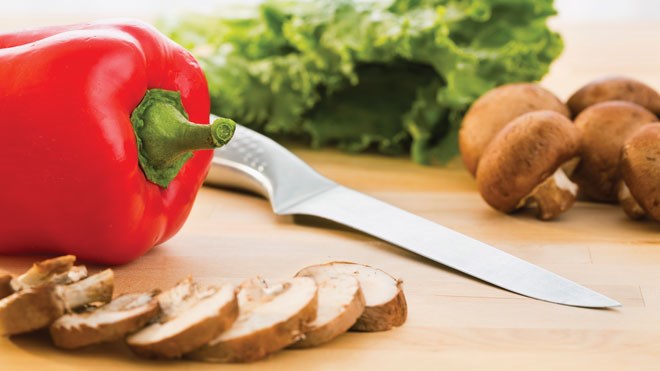With the start of 2014 comes another list of New Year’s resolutions — why not start the year off with a goal to share good food safety practices?
The Sudbury and District Health Unit has received reports of illness related to food that was improperly prepared in the home. The health unit reminds residents of the importance of safe food handling. Whether you are getting ready for your first grocery shopping trip of the year, having a party or serving up leftovers, here are some simple tips that all food handlers can follow for cooking a delicious and safely prepared meal.
Before cooking
-Ensure hazardous foods such as meat and dairy products are kept refrigerated at 4 C (40 F) or less until ready for cooking. Use a thermometer in your refrigerator to ensure it is at 4C (40F) or below.
-Foods left in the danger zone (4C – 60C) or room temperature for two or more hours can become unsafe to eat. This is the zone where germs grow and readily multiply.
-Raw meat should be kept on the lowest shelf of the fridge and held in a container that prevents blood or meat juices from dripping onto the food below.
-Wash hands with warm water and soap for 20 seconds before and after handling food and after using the toilet.
-Wash with soap and water and sanitize countertops, cutting boards and utensils with a mild bleach and water solution after they have come in contact with raw meat.
During and after cooking
-Cook foods to a safe internal temperature using a digital thermometer
-For meat, push the thermometer into the thickest section of the cut, making sure that it is not touching bone, fat or gristle.
-Wash, rinse and sanitize thermometers in between testing the meat.
-When the meat has finished cooking, don’t put it on the same plate you used for the uncooked meat. Juices from the uncooked meat may contain harmful bacteria.
Leftovers
Even when refrigerated properly, leftovers should be eaten, frozen or discarded within three to four days.
When heating and storing leftovers keep the following in mind:
-Refrigerate cooked leftovers promptly — within 2 hours. Use a thermometer in your refrigerator to ensure it is at 4 C (40 F) or below.
-Divide leftovers into smaller portions and store in shallow containers in the refrigerator.
-Wash hands with warm water and soap for 20 seconds before and after handling food and after using the toilet.
-Reheat cooked leftovers thoroughly to 74C (165F) as measured with a food thermometer Sauces, soups and gravies should be reheated by bringing them to a boil.
-When microwaving leftovers, make sure there are no cold spots in food (where bacteria can survive). Cover food, stir and rotate for even cooking.
-Bring sauces, soups and gravy to a full boil every time you re-heat them.
As a further safety precaution, Cynthia Peacock-Rocca, manager of the Environmental Health Division, encourages residents to visit the Canadian Food Inspection Agency’s website to view food recall alerts. Residents can subscribe to receive notifications (email, Twitter, RSS, etc.) at www.inspection.gc.ca.
If you suspect that you may have a food-borne illness, consult with your physician as soon as possible. Symptoms of food-borne illness can include: stomach cramps, diarrhea (possibly bloody), fever, nausea and or vomiting.
For more information on these food safety tips, contact the Environmental Health Division at 705-522-9200, ext. 464 or visit www.sdhu.com.
Join Sudbury.com+
- Messages
- Post a Listing
- Your Listings
- Your Profile
- Your Subscriptions
- Your Likes
- Your Business
- Support Local News
- Payment History
Sudbury.com+ members
Already a +member?
Not a +member?
Sign up for a Sudbury.com+ account for instant access to upcoming contests, local offers, auctions and so much more.
